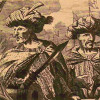
Pirates, Plunder and Bushrangers Bay
By Peter Jupp.
This lucky country doesn’t know what it’s like to live in constant terror! But in other eras few large towns were built near the vulnerable coast for fear of murderous, ravaging, brutalised pirates. Every old coastal town [...]

Letter: Hitler prevents German victory in WWII
By Ronald Bleier.
I’ve written earlier of my admiration for Cambridge Professor Richard J. Evans’s fluency, the extent of his learning and his indefatigable industry. I’ve also complained that I see him standing [...]

Nelson Mandela 1918 – 2013
By Melanie Nathan.
Nelson Mandela, our father has died.
The man who believed in full equality for all, for everyone everywhere … One of the most remarkable human beings of all time
Our beloved Madiba, Nelson Mandela, has just died. With [...]

Hugo Chavez in the context of history
By Juan Carlos Zambrana.
(An article about how Hugo Chavez when living became a historical figure for Venezuela)
Bolivian Newspaper Cambio.
Thanks to Chavez, other peoples were able to compete in a democracy against the interests of [...]
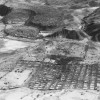
War, Inca predecessors, used restraints to reshape human landscape
Posted by Alton Parrish.
Dartmouth study sheds new light on how pre-Inca states became empires in early America
The Wari, a complex civilization that preceded the Inca empire in pre-Columbia America, didn’t rule solely [...]
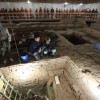
Archaeological discoveries confirm early date of Buddha’s life
By National Geographic.
Archaeologists working in Nepal have uncovered evidence of a structure at the birthplace of the Buddha dating to the sixth century B.C. This is the first archaeological material linking the life of the Buddha [...]
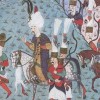
Days of Future Mahdism Have Not Passed
By Timothy Furnish.
Some time back I was asked by a friend/follower on Twitter about scenarios that could lead to a Mahdist movement taking power somewhere in the modern Muslim world. I will now attempt to construct a plausible [...]
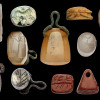
600 stamp and cylinder seals found at sanctuary of storm god in Turkey
By Alton Parrish.
Classical scholars from the Cluster of Excellence “Religion and Politics” made an unusually large find of seals in an ancient sanctuary in Turkey. They discovered more than 600 stamp seals and cylinder seals at the [...]
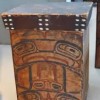
Ancient, modern DNA tells tale of first humans in America
By University of Urbana-Champaign.
University of Illinois anthropology professor Ripan Malhi looks to DNA to tell the story of how ancient humans first came to the Americas and what happened to them once they were here.
He will share [...]
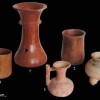
Early uses of chilly peppers in Mexico including beverages
By Alton Parrish.
Mixe-Zoquean cultures may have had multiple culinary uses for chili peppers
Chili peppers may have been used to make spicy beverages thousands of years ago in Mexico, according to new research published November 13 in [...]

Ancient Spores
By David Banks.
For the moment I’m alone on my belly crawling in darkness. With every breath I can feel spiny particles of dust entering my nostrils and working their way up to my sinus cavity. It is here where the tiny particles of earth, [...]
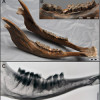
Cattle Farming Began In China More Than 10,000 Years Ago
Posted by Alton Parrish.
An international team of researchers, co-led by scientists at the University of York and Yunnan Normal University, has produced the first multi-disciplinary evidence for management of cattle populations in northern [...]
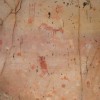
Fantastic Cave Paintings Found By Following Wild Peccaries
Posted by Alton Parrish.
Wildlife Conservation Society (WCS) researchers discover 4,000- to 10,000-year-old cave drawings.
The white-lipped peccary (Tayassu pecari), is a hog-like animal found in Central and South America. It roams in dense, [...]

Secret History of the “Arab Spring”
By Barry Lando.
Recruits for Al Qaeda
Since 9/11 the overriding concern of U.S. policy across the Middle East and Central Asia has been to defeat Al Qaeda and other radical Islamic groups. Hundreds of billions of dollars are being spent on [...]

Vikings Bought Silk From Persia, May Have Reached China
By University of Oslo.
The Norwegian Vikings were more oriented towards the East than we have previously assumed, says Marianne Vedeler, Associate Professor at the Museum of Cultural History, University of Oslo in Norway. After four years [...]

What if Kennedy Survived Dallas? Would He Have Been Impeached?
By Bryce Zabel.
If President John Kennedy had survived the ambush at Dealey Plaza a half-century ago, what other twists might history have taken? In his meticulously researched novel, Surrounded by Enemies: What if Kennedy Survived Dallas?, [...]
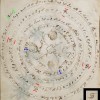
Secrets of Voynich Manuscript That No One Can Read Revealed
By UA and YU.
University of Arizona researchers have cracked one of the puzzles surrounding what has been called “the world’s most mysterious manuscript” – the Voynich manuscript, a book filled with drawings and writings [...]

The Scars Of Slavery
By Alton Parrish.
The diaspora of Afro-descendants in Mexico and Central America takes on many guises, as reflected in names used such as Colonial Blacks, Afro-Antilleans, Garifuna. Status and levels of social recognition and integration [...]
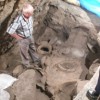
Armenia Vintage 4100 B.C. Wine: Chemical Analysis Confirms Discovery Of Oldest Wine-Making Equipment Ever Found
By UCLA.
Analysis by a UCLA-led team of scientists has confirmed the discovery of the oldest complete wine production facility ever found, including grape seeds, withered grape vines, remains of pressed grapes, a rudimentary wine press, a clay [...]
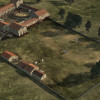
School Of Gladiators Discovered At Roman Carnuntum, Austria
By Ludgwig Boltzmann Institute.
Blood and Sand – the life and death of Gladiators in Roman Austria
An international team of archaeologists, geophysicists and computer specialists from the Ludwig Boltzmann Institute for Archaeological [...]


